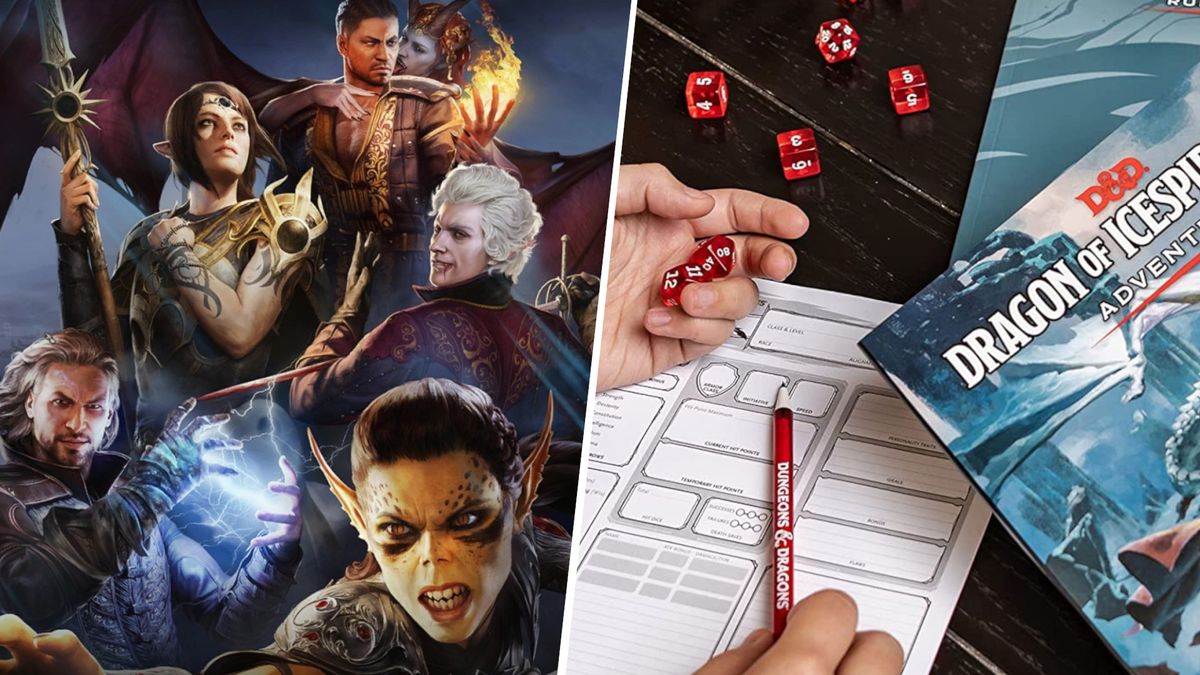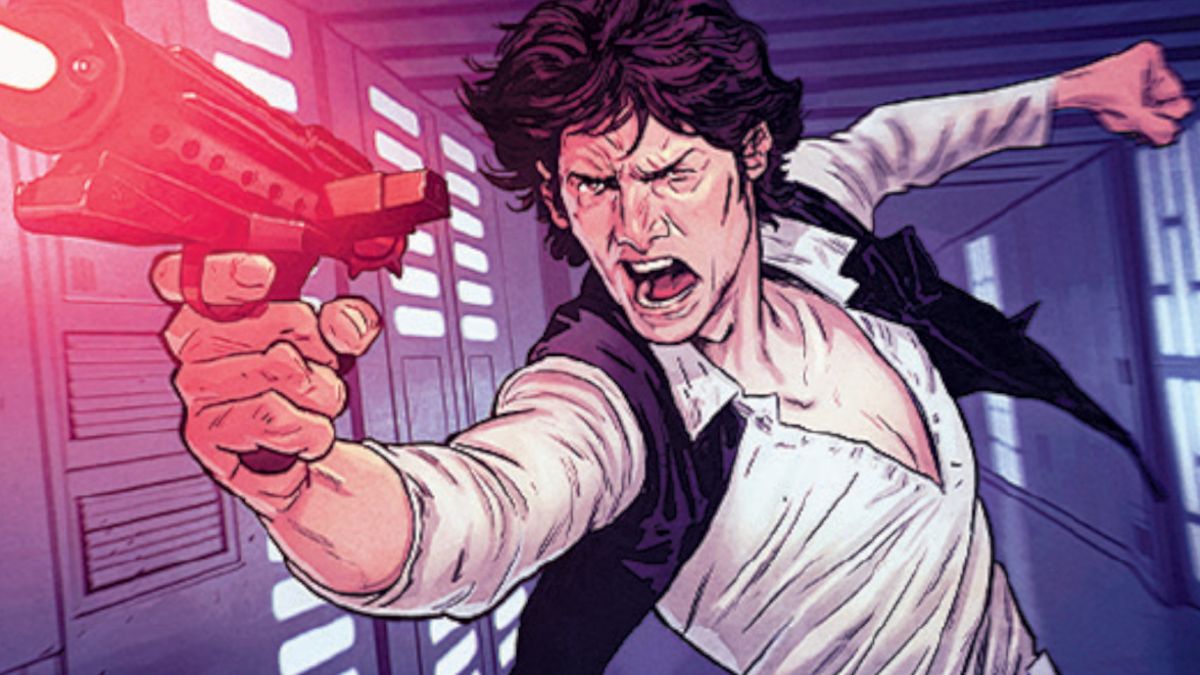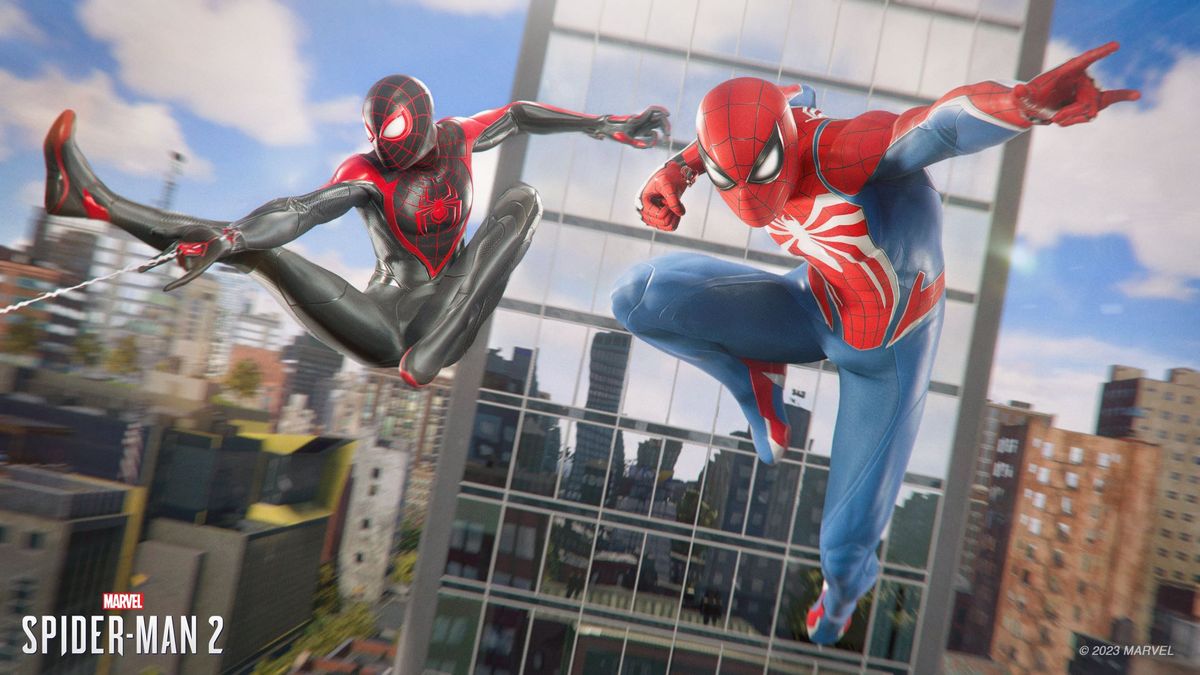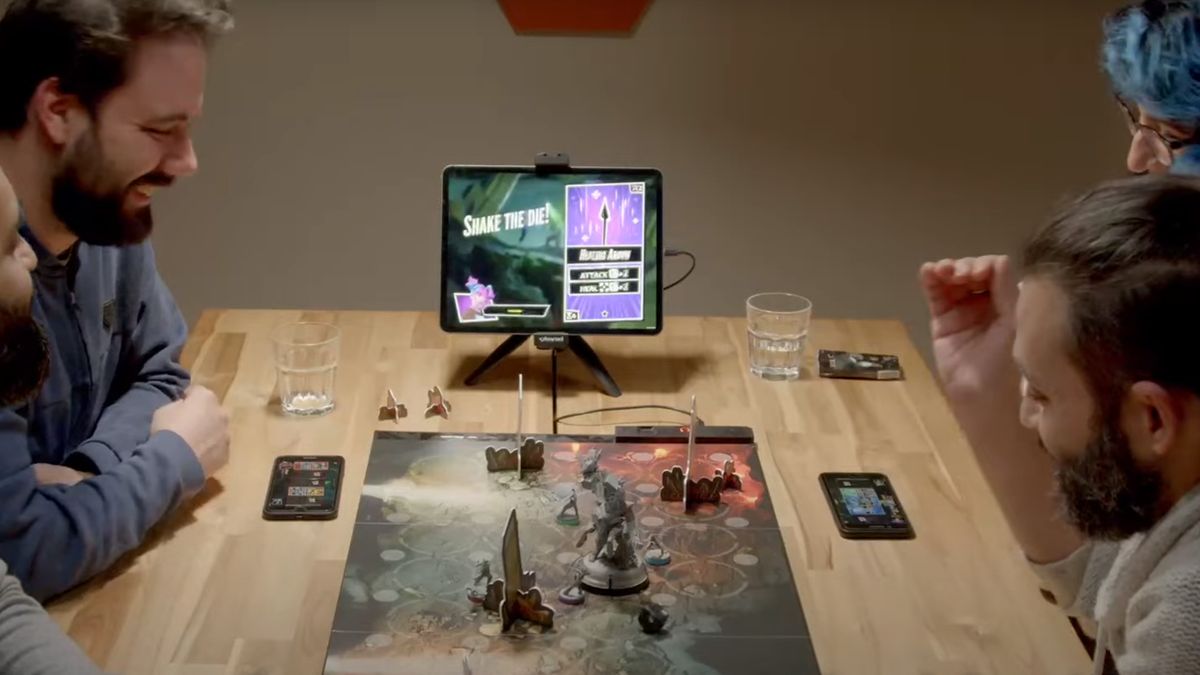Loquatius Seelie from Critical Role would know everything about you before you’d opened your mouth. As voice actor Sam Riegel explains when I catch up with him about the Calamity miniseries, his character doesn’t do anything by halves. Along with having smokescreen answers ready to go at the slightest whiff of scandal, he’d “find out [your] predilections, and maybe even weaknesses.” For Loquatius, it’s all about controlling the narrative.
Except there’s no controlling Calamity. An event set generations before the current Critical Role campaign, this apocalypse has been a cornerstone of the show’s lore since it began in 2015. That means fans know exactly how the mini-series (run by Dimension 20’s Brennan Lee Mulligan and starring Riegel, Marisha Ray, Travis Willingham, Aabria Iyengar, Lou Wilson, and Luis Carazo) is going to end.
It’s going to end badly.
A more civilized age

In one sense, at least. I’ve watched my fair share of Critical Role, the actual-play series where a ‘bunch of nerdy-ass voice actors’ play some of the best tabletop RPGs together, but Calamity feels different. It feels… bigger. Not because of the new cast, or even because of the adventure’s scope. Rather, it’s because everything seems more connected than ever.
“I think it’s actually going to affect our current campaign in ways that we haven’t haven’t even predicted yet,” Riegel tells me. “Some of the things that we’re talking about, the Calamity, have echoes even 1,000 years into the future. It’s like going in a time machine.”
Character creation

Because it’s set hundreds of years before the current era of Critical Role, Riegel says that the cast “were encouraged to plan characters who were steeped in magic, were surrounded by magic every day of their lives.” As a result, his idea was to play “a Fox News host type of character. Or a propagandist, I should say. And it would be great if he could broadcast his his image and his voice across the town. And Brennan said, ‘what if we had these magical crystals that were like televisions?’ We just kind of fed off of each other.”
Those connections are already starting to bear fruit. Villains from Calamity have been name-dropped throughout the main Critical Role campaign, and season 3’s setting – Marquet – has been referenced numerous times during this mini-series. What’s more, Marquet and its Calamity-era history came up during Tal’Dorei Reborn and Call of the Netherdeep. It’s reminiscent of Marvel Cinematic Universe-style storytelling in the best way; there’s a sense of shared mystery, of plot threads that we’re all picking at together. And because Critical Role Game Master Matt Mercer helped create this adventure, it’s not being told in a vacuum either. Something is clearly brewing.
That makes me excited for what comes next. Especially due to the fact that Calamity explores a time-period I’d assumed was off limits – the era has always been kept vague, a source of plot hooks instead of an active story. Pulling back the curtain lets the show break new ground; rather than “ancient Greek horse-drawn carriages and stuff like that,” the people of this age “were actually much more technologically savvy and magically savvy than present-day.” That gives us our first quasi-modern or sci-fi tinged Critical Role campaign. It also opens the door to genres beyond standard fantasy.
It’s not just a tragedy because of outside forces
Sam Riegel
For Riegel, this was a surprise. However, exploring the era in person grounds this part of Critical Role history in something relatable.
“As long as I’ve been playing Critical Role, I’ve been hearing about the Calamity,” he says. “But when you hear it talked about by Matt [Mercer] in-game or even mentioned in the books that we put out, it seems like ancient Greek mythology. It’s like, ‘oh yeah, I’ve heard those stories, but they don’t really relate to me much’. So it’s really fascinating to be in it, to realize that this cataclysmic event was actually peopled by real characters, and it had an effect on the world. It affected families and children. That makes it more visceral.”
Fatal flaws

It’s a change of pace for Riegel; he’s known for his sense of humor, and anyone who’s watched Critical Role will know that spontaneity or unexpected curve-balls are a specialty. And although there are still moments of levity (a good example being the now-infamous Bolo, a surly party guest of Loquatius that Riegel and Mulligan made up on the spot), Calamity allowed him to lean into something different.
“I haven’t really done a whole campaign like this, or a full storyline where it’s just dramatic the whole time. This is not to say that Calamity is 100% dramatic the whole way through – there’s jokes, and there’s a lot of tension-breaking moments – but it’s a really cool thing that I’ve just never done before. And I don’t think a lot of the cast has done something that is purely dark and purely tragic. It’s a cool new muscle to exercise.”
Naturally, things weren’t so bleak when the project began. Even though Calamity takes place at the end of the world (or the ‘ancient’ world, anyway), making it was a more collaborative process than normal. In contrast to other Critical Role stories where characters are created solo, the cast joined forces this time around to build their adventurers together. That allowed them to come up with pre-existing relationships between the heroes.
We just start talking and see what happens, and Brennan rolls with the punches
Sam Riegel
“It was unlike prep for other campaigns,” Riegel explains. “Because in our main campaign, we have so much time, you know, years and years to get our backstories out and to flesh out our characters and to figure out what their goals are. But in this series, we knew ahead of time that it was only gonna be four episodes. So any backstory, any interpersonal relationships, we needed to have that figured out and also out in the open pretty fast. Our characters go into it with some secrets, but those secrets come out within two or three episodes, which makes for some really great twists and turns, and just a much more urgent, fast-paced story.”
These preliminary sessions allowed the cast to go off-piste in unexpected ways, too. Right off the bat, a higher level-cap allowed them to be more formidable, and more established, than before. Knowing that this was a tragedy set during a time of unprecedented arrogance also helped them have fun with character faults. Mulligan emphasized to the cast that it’s “not just a tragedy because of outside forces”; rather, the Calamity stems from fatal flaws in individuals like our heroes. As such, there’s a morbid fascination (or shades of a disaster movie at the very least) in seeing when, rather than ‘if’, they cause their own downfall.
Off the cuff

However, the cast didn’t prep everything. Far from it, in fact. While their interactions with non-player characters help make the world of Calamity feel so lived in, Riegel informs me that none of this was planned. They simply had a list of names their adventurers would know.
“Brennan is a truly gifted improviser,” says Riegel. “And so when I began my scene with him with my assistant character [in episode 1], I just assumed that we were familiar with each other, and I assumed a relationship. And he just rolled with it and invented a character on the spot that would complement that. We hadn’t practiced it ahead of time. And a lot of that was just sort of on the spur of the moment. And for most of the characters, the NPCs that we’re interacting with in this game, that’s all it is. We just start talking and see what happens, and Brennan rolls with the punches.”
Side quest

If Sam Riegel was to make his own mini-campaign for Critical Role, what would it look like?
“While this campaign mini-series has been amazing, and I would love to think that I could do something like this, I don’t actually think that I’m skilled enough as a GM, or skilled enough in fantasy world-building, to be able to pull off what Brennan has pulled off here… [But] a mini-campaign that I would design would be much more focused on chaos and unpredictability, and also silliness. I think I would challenge the players with the unexpected, but in weird ways, not necessarily in dark ways. So yeah, I think a comedy campaign is in my future somewhere.”
What follows is a memorable yarn for both Critical Role veterans and newcomers who only have a passing interest in TTRPGs or board games. Live improv-grenades are being thrown left and right, and there’s an infectious energy as the cast do what they do best: perform.
“Being at that table in particular, with Brennan as our GM, and with those six players, it was like being at a major league baseball game where everybody is an all-star, you know?” Riegel says. “And so you delight in throwing each other curveballs because you know they can hit him just as well as a fastball straight down the middle. Like, these guys are experts, experts at D&D, experts at improv, with years and years and years of experience. So absolutely, we all had a blast challenging each other, pushing each other in weird directions, and seeing what would happen, because those are the coolest kind of stories. It’s fun to see your peers, you know, do their thing.”
More surprises will no doubt drop with the finale, so it’ll be fascinating to see where the last episode of Calamity leaves Critical Role. What’s next for the show? The cast remains tight-lipped, so we’ll just have to wait and see. Is it Thursday yet?
For tabletop adventures of your own, be sure to check out these Dungeons and Dragons books, must-have board games for adults, and these essential cooperative board games.
 Games News games, movies and TV you love.
Games News games, movies and TV you love.



